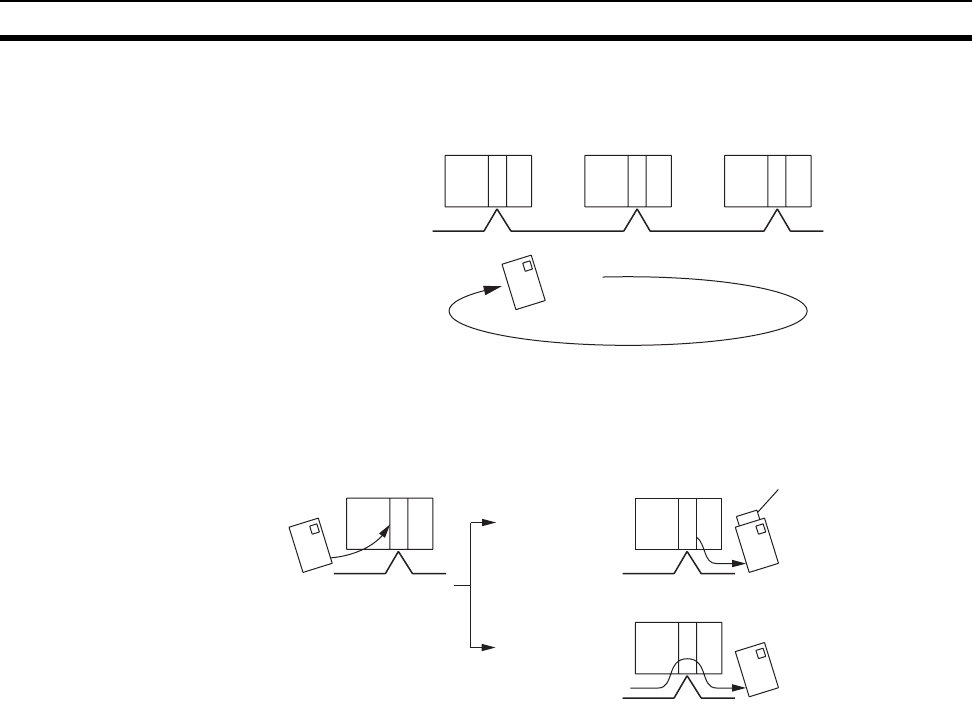
248
Communications Mechanism Section 8-1
8-1 Communications Mechanism
8-1-1 Data Transmissions over the Network
In a Controller Link Network, token passing is used to control network access.
The right to send, called a “token,” circulates around the network. A node that
receives the token is allowed to send data. If the node has data to send, it will
attach the data to the token and send them together. If the node has no data
to send, it will pass the token to the next node.
A token can be thought of as a circulating envelope. This envelope is circu-
lated through the network and the person who receives the envelope will put a
destination and a memo into the envelope to send his or her message to
somebody else. This method is called “token passing.” The Controller Link
Network is a bus network that uses token passing.
The overall network communications procedure is explained below.
1,2,3... 1. The Unit at the node that manages the network, called the “polling node,”
transfers the token. The token is circulated through the network in ascend-
ing order of node addresses. One cycle in which the token is circulated
among all nodes on the network is called a “token circulation cycle.”
2. After one token circulation cycle is complete, the polling node checks the
network connection status. One cycle in which the connection status of all
nodes on the network is checked is called a “polling cycle.”
3. After one polling cycle is complete, the polling node transfers the token
again.
The procedure is then repeated. In a Controller Link Network, the total time
required for a token circulation cycle and a polling cycle is called the “commu-
nications cycle time.” Communications processing is executed by repeating
the communications cycle.
Controller Link
Token
(right to send)
Receive the token
When there is
data to send
Where there is
no data to send
Data
Attaches data to the token and send them together
Passes the token to the next node


















